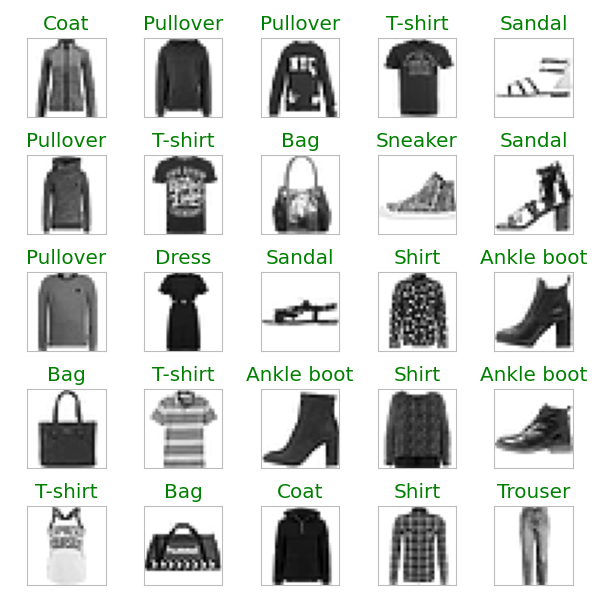A machine learning package
Project description
Pygmalion in the greek mythologie is a sculptor that fell in love with one of his creations. In the myth, Aphrodite gives life to Galatea, the sculpture he fell in love with. This package is a machine learning library. It contains all the tools you need to give a mind of their own to inanimate objects.
Installing pygmalion
pygmalion can be installed through pip.
pip install pygmalion
Fast prototyping of models with pygmalion
Architectures for several common machine learning tasks (regression, image classification, ...) are implemented in this package.
The inputs and outputs of the models are common python objects (such as numpy array and pandas dataframes) so there are few new things you need to learn to use this package.
In this part we are going to see how to load a dataset, train a model, and display some metrics. As a first step you can import the following packages.
>>> import pygmalion as ml
>>> import pygmalion.neural_networks as nn
>>> import pandas as pd
>>> import numpy as np
>>> import matplotlib.pyplot as plt
You can download a dataset and split it with the split function.
>>> ml.datasets.boston_housing("./")
>>> df = pd.read_csv("./boston_housing.csv")
>>> x, y = df[[c for c in d_Fcolumns if c != "medv"]], df["medv"]
>>> train_data, val_data, test_data = ml.split(x, y, frac=(0.1, 0.1))
Creating and training a model is done in a few lines of code.
>>> hidden_layers = [{"features": 8}, {"features": 8}]
>>> model = nn.DenseRegressor(x.columns, hidden_layers)
>>> model.train(train_data, val_data, n_epochs=1000, patience=100, learning_rate=1.0E-3)
Some usefull metrics can easily be evaluated.
For a regressor model, the available metrics are MSE, RMSE, R2, and the correlation between target and prediction can be visualized with the plot_fitting function.
>>> f, ax = plt.subplots()
>>> x_train, y_train = train_data
>>> ml.plot_fitting(model(x_train), y_train, ax=ax, label="training")
>>> x_val, y_val = val_data
>>> ml.plot_fitting(model(x_val), y_val, ax=ax, label="validation")
>>> x_test, y_test = test_data
>>> ml.plot_fitting(model(x_test), y_test, ax=ax, label="testing", color="C3")
>>> R2 = ml.R2(model(x_test), y_test)
>>> ax.set_title(f"R²={R2:.3g}")
>>> plt.show()
For a classifier model you can evaluate the accuracy, and display the confusion matrix.
>>> ml.datasets.iris("./")
>>> df = pd.read_csv("./iris.csv")
>>> x, y = df[[c for c in d_Fcolumns if c != "variety"]], df["variety"]
>>> inputs, classes = x.columns(), y.unique()
>>> hidden_layers = [{"features": 5},
>>> {"features": 5},
>>> {"features": 5}]
>>> model = nn.DenseClassifier(inputs, classes,
>>> hidden_layers=hidden_layers,
>>> activation="elu")
>>> train_data, val_data, test_data = ml.split(x, y, frac=(0.2, 0.1))
>>> model.train(train_data, val_data, n_epochs=1000, patience=100)
>>> f, ax = plt.subplots()
>>> x_test, y_test = test_data
>>> ml.plot_matrix(ml.confusion_matrix(y_test, y_pred, classes=classes),
... ax=ax, cmap="Greens", write_values=True, format=".2%")
>>> acc = ml.accuracy(y_pred, y)*100
>>> ax.set_title(f"Accuracy: {acc:.2f}%")
>>> plt.tight_layout()
>>> plt.show()
All the models can be dumped as a dictionnary through the dump property. A copy of the model can be loaded with the from_dump class method.
>>> dump = model.dump
>>> model = nn.DenseRegressor.from_dump(dump)
The models can also be be saved directly to the disk in json/hdf5 format with the save method. A model saved on the disk can then be loaded back with the load function.
>>> model.save("./model.json")
>>> model = ml.load("./model.json")
Implemented models
For examples of model training see the samples folder in the github page.
Neural networks
The neural networks are implemented in pytorch under the hood. The underlying pytorch Module and Optimizer can be accessed as the model and optimizer attributes of the model.
DenseRegressor
A dense regressor (or multi layer perceptron regressor) predicts a scalar value given an input of several variables.
This implementation takes in input x a pandas.DataFrame of numerical observations, and returns y a numpy.ndarray of floats of the same length. The optional weights weighting of the observations during training are numpy.ndarray of floats.
It is implemented as a sucession of hidden Activated0d layers (linear weighting/non linear activation/batch normalization) and a final linear weighting to reduces the number of features to one scalar prediction.
DenseClassifier
A dense classifier (or multi layer perceptron classifier) predicts a str class value given an input of several variables.
This implementation takes in input x a pandas.DataFrame of numerical observations, and returns y list of str of the same length. The optional weights weighting of the observations during training are numpy.ndarray of floats.
Similarly to the DenseRegressor it is a succession of hidden Activated0d layers, and a final linear layer with as much output as there are classes to predict.
ImageClassifier
An ImageClassifier predicts a str class given as input an image. Here below the predictions of a model trained on the fashion-MNIST dataset.
It is implemented as a Convolutional Neural Network similar to LeNet.
SemanticSegmenter
A SemanticSegmenter predicts a class for each pixel of the input image. Here below the predictions of a model trained on the cityscape dataset.
It is implemented as a Convolutional Neural Network similar to U-Net. It is a succession of convolutions/pooling followed by a succession of upsampling/convolutions, leading to a convergent/divergent feature map structure. The feature map before each downsampling stage is concatenated to the upsampling of the same size to preserve features.
Project details
Release history Release notifications | RSS feed
Download files
Download the file for your platform. If you're not sure which to choose, learn more about installing packages.
Source Distribution
Built Distribution
Hashes for pygmalion-0.0.10-py3-none-any.whl
| Algorithm | Hash digest | |
|---|---|---|
| SHA256 | 62f42d340ae4336516c6fdcb796607d07aae6cc7e8a3387dfa7eb1ededc72437 |
|
| MD5 | 9e566b627314d044d74675d31b0245c6 |
|
| BLAKE2b-256 | b7a9241c8c6f11c7036ae9674eb06b8ec8bd38e5fb4171166eb1642ce683deb9 |















